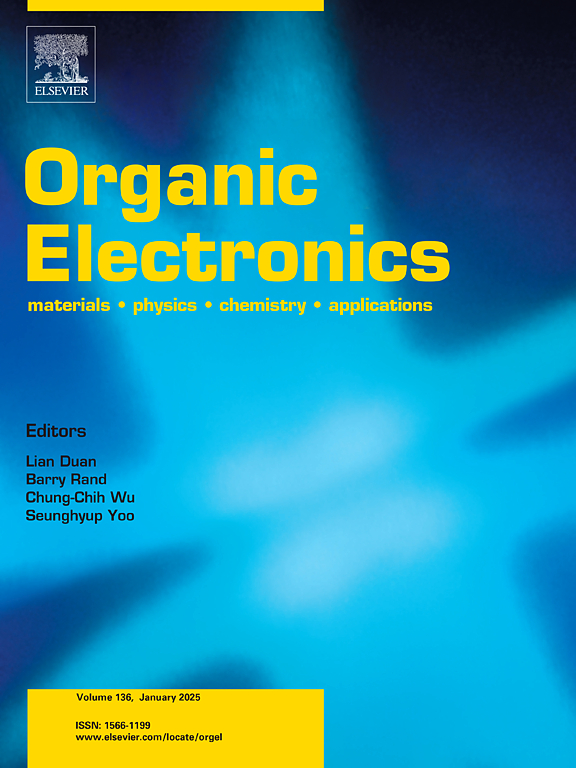Ternary solvent engineering incorporating hydrogen bonding for FAPbI3 perovskite solar cells
IF 2.7
4区 工程技术
Q3 MATERIALS SCIENCE, MULTIDISCIPLINARY
引用次数: 0
Abstract
This study explores crystallization rate control to improve grain size and surface roughness. Traditional binary solvent engineering has limitations for FAPbI3 films because of rapid solvent evaporation at high annealing temperatures. Accordingly, this research proposes ternary solvent engineering (TSE) using dimethylformamide (DMF), dimethyl sulfoxide (DMSO), and anisole (AN), which delays crystallization by forming hydrogen bonding. This finding demonstrates that AN, which is typically used as an antisolvent, can be effectively utilized as a PbI2 precursor solvent. This approach affords larger grain sizes, reduces surface roughness, and improves charge transport, leading to an improvement in PCE from 12.23 % to 13.85 % by enhancing the fill factor. The results of this study suggest that TSE with AN can significantly enhance the performance of PSCs, providing a new pathway for efficient perovskite film fabrication.

含氢键的FAPbI3钙钛矿太阳能电池三元溶剂工程
本研究探索控制结晶速率以改善晶粒尺寸和表面粗糙度。传统的二元溶剂工程对FAPbI3薄膜的制备具有一定的局限性,因为在高退火温度下溶剂会迅速蒸发。因此,本研究提出了使用二甲基甲酰胺(DMF)、二甲基亚砜(DMSO)和苯甲醚(AN)的三元溶剂工程(TSE),通过形成氢键来延迟结晶。这一发现表明,通常用作抗溶剂的AN可以有效地用作PbI2前驱体溶剂。这种方法提供了更大的晶粒尺寸,降低了表面粗糙度,并改善了电荷输运,通过提高填充系数,PCE从12.23%提高到13.85%。本研究结果表明,添加AN的TSE可以显著提高PSCs的性能,为高效制备钙钛矿薄膜提供了新的途径。
本文章由计算机程序翻译,如有差异,请以英文原文为准。
求助全文
约1分钟内获得全文
求助全文
来源期刊

Organic Electronics
工程技术-材料科学:综合
CiteScore
6.60
自引率
6.20%
发文量
238
审稿时长
44 days
期刊介绍:
Organic Electronics is a journal whose primary interdisciplinary focus is on materials and phenomena related to organic devices such as light emitting diodes, thin film transistors, photovoltaic cells, sensors, memories, etc.
Papers suitable for publication in this journal cover such topics as photoconductive and electronic properties of organic materials, thin film structures and characterization in the context of organic devices, charge and exciton transport, organic electronic and optoelectronic devices.
 求助内容:
求助内容: 应助结果提醒方式:
应助结果提醒方式:


